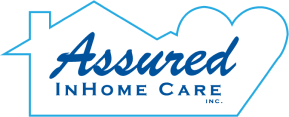Hiring an in home caregiver is a significant step in ensuring your loved one receives the care and support they need. While finding the right in home caregiver is a major accomplishment, the journey doesn’t end there. The transition period is crucial in establishing trust, setting expectations, and creating a positive caregiving experience for everyone involved.
In this guide, we’ll share key tips to help you navigate life after hiring an in home caregiver. From the bare necessities to setting clear routines to fostering a successful relationship, these strategies will help ensure your loved one receives the best possible care while maintaining their dignity and independence.
The Bare Necessities
First and foremost, the agency you select needs to be a licensed agency. Licensed agencies will require fingerprinting, workers compensation, and liability coverage to keep your loved one safe.
Second, post a visible and legible list of all medications, doctors name, emergency contacts, and emergency specifics at your loved one’s home. This is not just for the in home caregiver’s benefit, but for anyone and everyone who enters your loved ones home.
Third, for loved ones with specific medication requirements ensure reminders are set up in advance or daily pill boxes are utilized. For example, adults with Parkinson’s’ disease, or thyroid medications need to have these medications at specific times. We suggest buying a timer to remind everyone for each medication reminder time. Set up your loved one’s pills in an easy pill box or have a pharmacy “bubble package” the medications for easy reminders of pill taking times.
Establish a Schedule
Suggest to the in home care agency to schedule the same caregiver at the same time each week. Keeping to a schedule is the key to bonding. Try not to ask the agency to change hours or times weekly. This could cause a caregiver staffing change.
Try to hire an in home caregiver for at least 30 hours a week. Less than 30 hours may not give the caregiver enough hours and they may find work elsewhere. Full time employment is best for less turnover.
Ask the caregiver or agency to have the caregiver sign for permission of camera monitoring, whether you have them or not.
Start with Success
The first couple days review a detailed list of job duties you and the caregiver agree upon. Feel free to provide the in home caregiver with a list of responsibilities to accomplish while they are with your loved one.
For example:
- Take out the trash out of the kitchen to the outside bin
- Do the dishes and cook three meals a day
- Assist my mom/dad with a puzzle once a day
- Take my mom/dad on a walk once a day for around 20 minutes
- Turn on her/his favorite tv show___: at ___ time
Create a list of your loved one’s favorite foods, snacks, and meals. It is best to teach the in home caregiver the way your loved one prefers to have these meals cook. At the very least, provide basic instructions on how to prepare the meal.
Additionally, provide the in home caregiver tips on how to care for your loved one. For example, give showering and bathing tips. Review how many times a week your loved one likes to take a bath and make a bathing schedule with suggested times, such as morning or evening. The more you can help the in home caregiver be successful with your loved one, the better the relationship can be overall.
There is so much to learn regarding an older adult’s likes and dislikes, and the caregiver often wants to make the older person happy. With tips, schedules, and information given ahead of time to the caregiver, the older adult will hopefully appreciate the efforts to get to know them and their preferences.
Expect the Unexpected
Sometimes things happen unexpectedly, without much time to prepare. When the unexpected does happen, be ready to advise how care should be provided. For example, your loved one has experienced an emergency situation or is being discharged from the hospital. We suggest you write your loved one’s basic preferences of care, meals, and anything else important for the wellbeing of your loved one and provide it to the caregiver. Collaborate on ideas and suggestions to make the caregiving situation as healthy as possible.
Be proactive. Create this list now, so you can add in more details later to ensure the in home caregiver is set up for success.
Also, do not be afraid to call the management office of the agency for questions. They are there to help with the transition and if it was an emergency placement, a manager may show up the following day to check in with your loved one and call you with a report. Call as much as you need in order to make the transition successful. Ask as many questions as you want and know agencies are here to make your life better – not more complicated!
Notify the Agency
If you’ve followed all these tips and your loved one has a “bad feeling” or does not like the caregiver, let the agency know after the shift to try someone new. Try to give the in home caregiver a chance for at least two to three visits, if possible. Let the agency know your loved one’s likes and dislikes.
For example:
- My mom/dad is outgoing and would like someone who talks a lot
- My mom/dad is quiet and shy and likes someone who listens well and is positive but is not too talkative
The more you can provide the agency with examples like this, the better the agency can match you with the right in home caregiver. This is a two-way relationship – it is best to address issues sooner rather than later.
For more success tips after hiring an in home caregiver, please visit our website or contact us directly. Together, we can ensure your loved one has the right in home caregiver for their specific needs.
Written by Jacqueline DuPont-Carlson, PhD, EdD, Gerontologist
For more questions, please contact an advisor at Assured In Home Care at (800) 925-7159.








